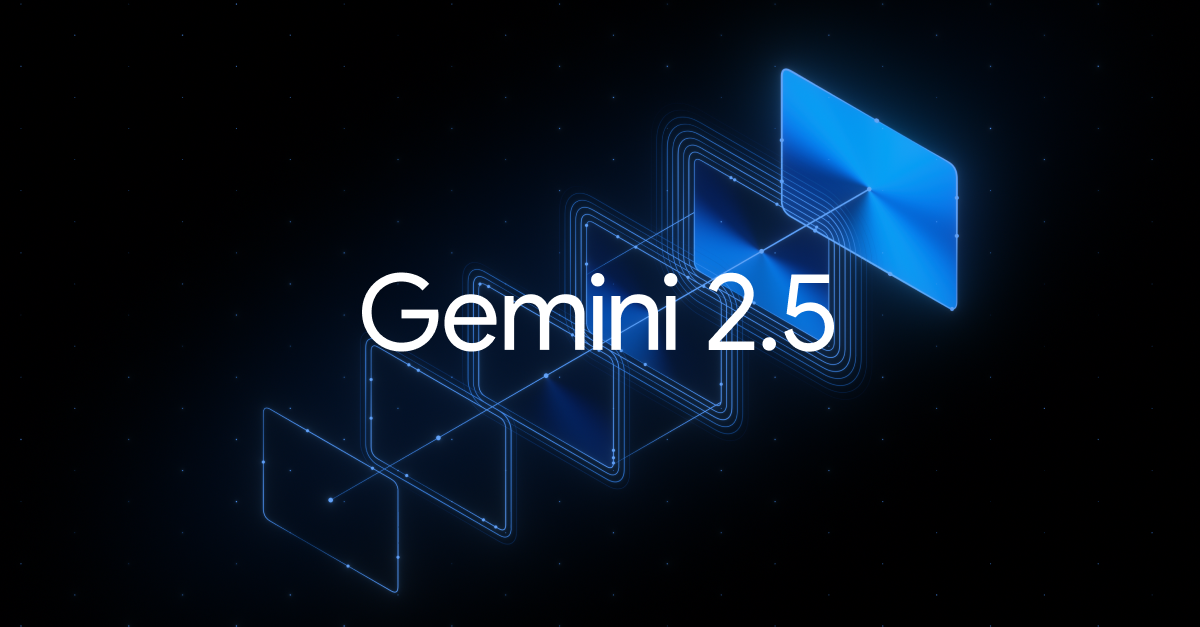Grass is growing on my phone and I'm powerless to stop it
Dbrand's latest limited edition skins give your synthetic device a flair for nature.
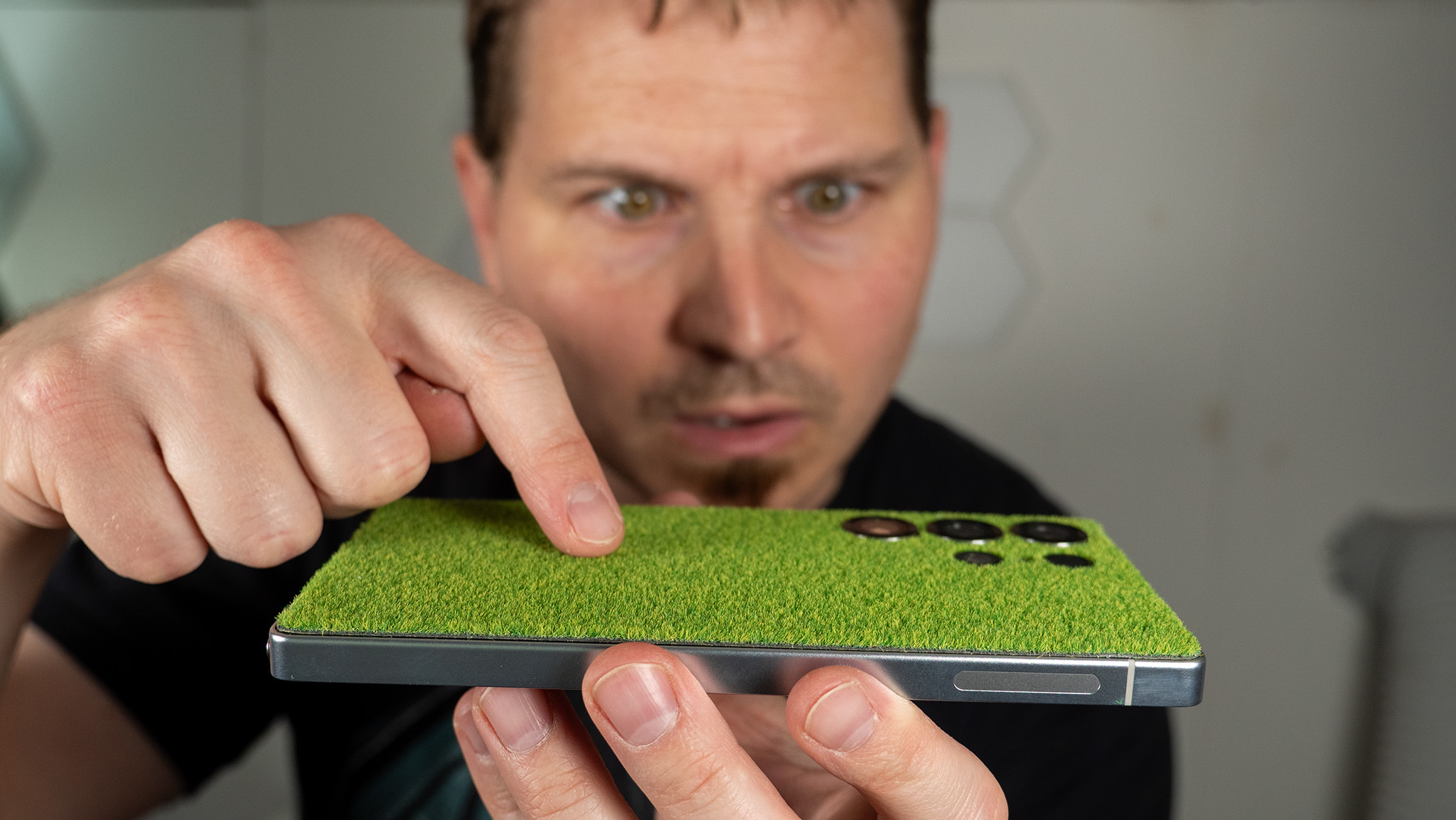
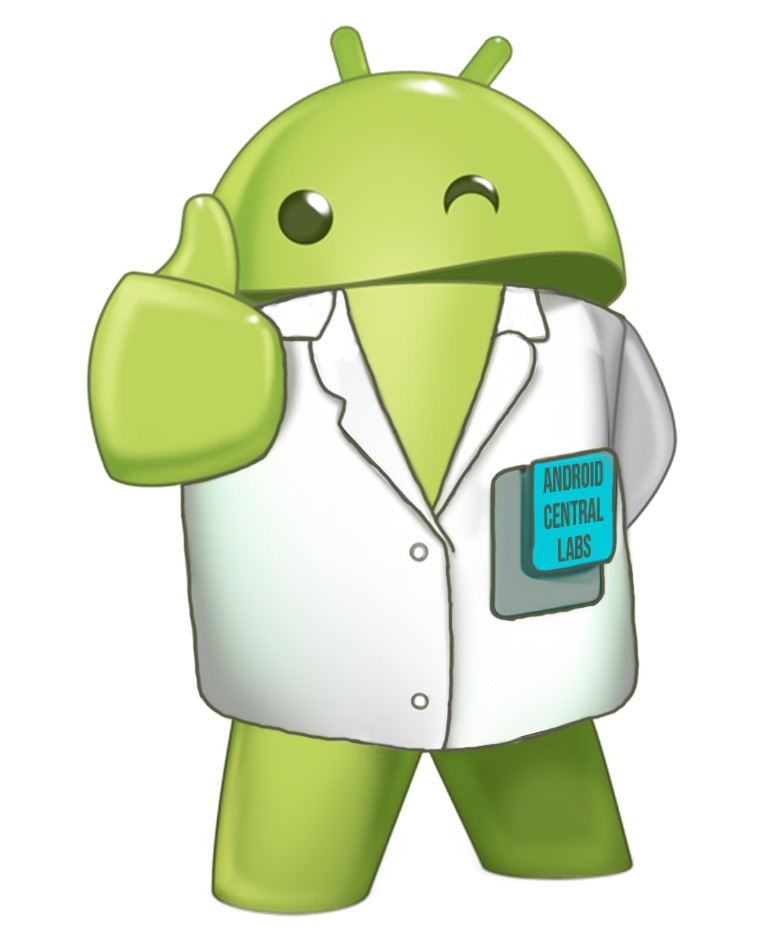
Android Central Labs is a weekly column devoted to deep dives, experiments, and a focused look into the tech you use. It covers phones, tablets, and everything in between.
As I pulled the Samsung Galaxy S25 Ultra out of my pocket, an unfamiliar friction met my fingers. This wasn't the matte glass texture that I'm used to feeling from Samsung's latest flagship. No, instead, was it the coarse texture of a brush or, dare I suggest it, turf grass?
Indeed, it was the feeling of the latest DBrand skin drop, Touch Grass, which allows you to place your very own little field of dreams on your favorite device. The company says over 100 devices are supported for this limited edition drop, and while it is an April Fool's joke of sorts, DBrand is actually selling this limited edition set of skins to willing customers (so get it while it lasts!).
Given how much I've loved Dbrand's previous limited edition drops — like the leather one — I couldn't pass up the opportunity to touch grass and see how it felt, so I got a pack for a few phones in my possession and hastily installed them. If you're a nerd who's ever been told to "touch grass," this might be the perfect opportunity without having to go outside to do it.
Ending slippery phones, one blade at a time
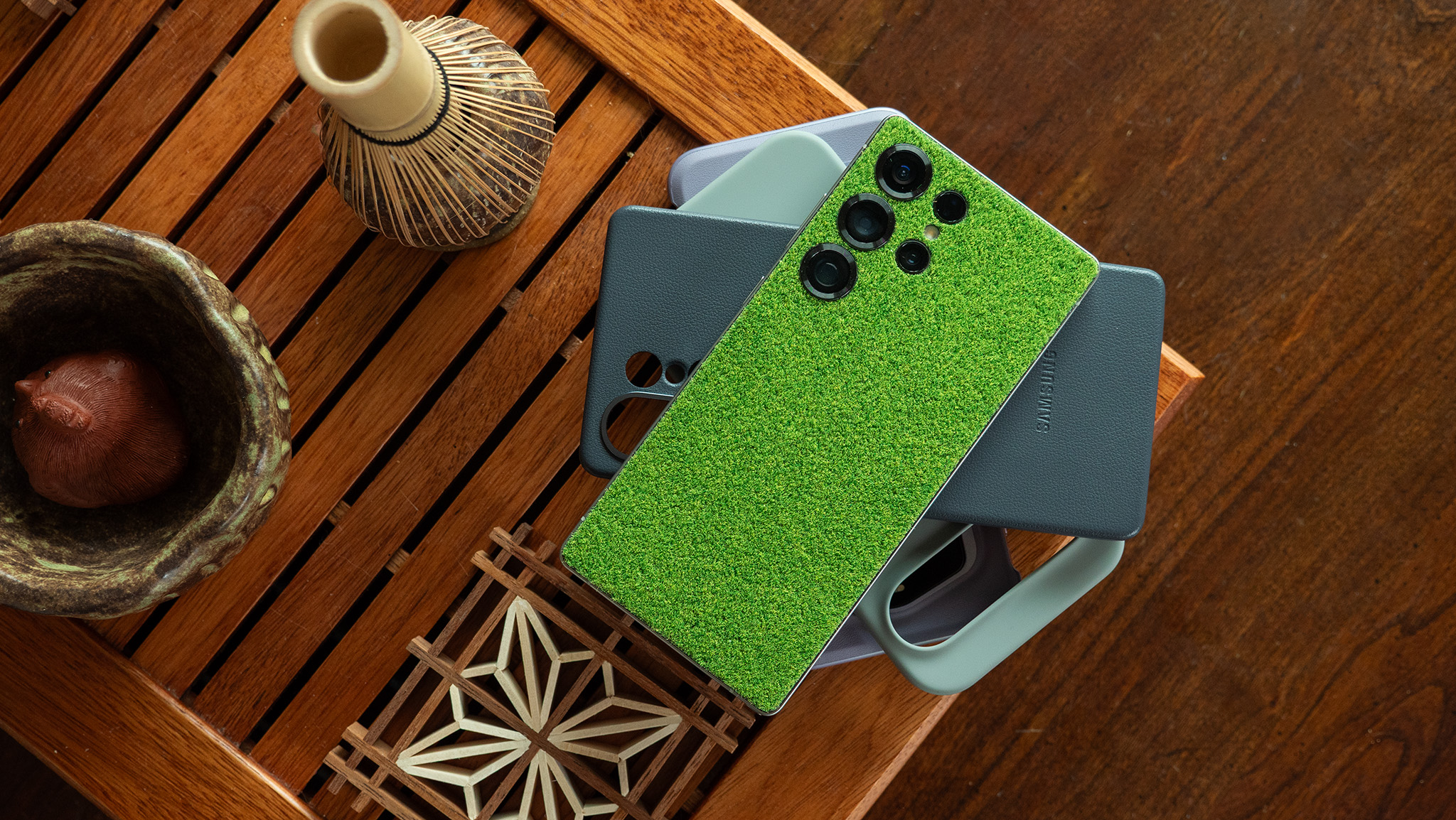
Despite the unique texture, the DBrand Touch Grass skin installs the same way as any other DBrand skin. You'll use the included microfiber cloth to wipe off any grease or smudges on the back of your phone, peel off a portion of the 3M paper on the back of the grass skin, align it with the camera modules, and then slowly peel back the rest of the 3M paper as you press the skin's adhesive back onto the phone's glass surface.
Unlike some of the full-coverage skins, the Touch Grass skin doesn't require a hair dryer for application. Instead, you'll just use the included microfiber cloth to rub the edges 15-20 times until they "melt" into the edge. This works particularly well with any phone that has a flat back and a slightly raised lip around the edge, as it'll help conceal the edge of the skin so you don't accidentally peel it off with a fingernail.
The skin is thicker than most DBrand skins because of the raised grass texture, which comprises thousands of electrostatically flocked polyethylene strands. Dbrand told me that flocking — a process that "shoots hyper-thin strands into adhesive and has them stand up like actual grass" — was the only method the company could find to fit the vision for the product properly.
"There were definitely 'fuzz' alternatives that we took one look at and abandoned. They were more akin to moss than they were actual strands of grass," DBrand CEO Adam Ijaz told me.
Be an expert in 5 minutes
Get the latest news from Android Central, your trusted companion in the world of Android
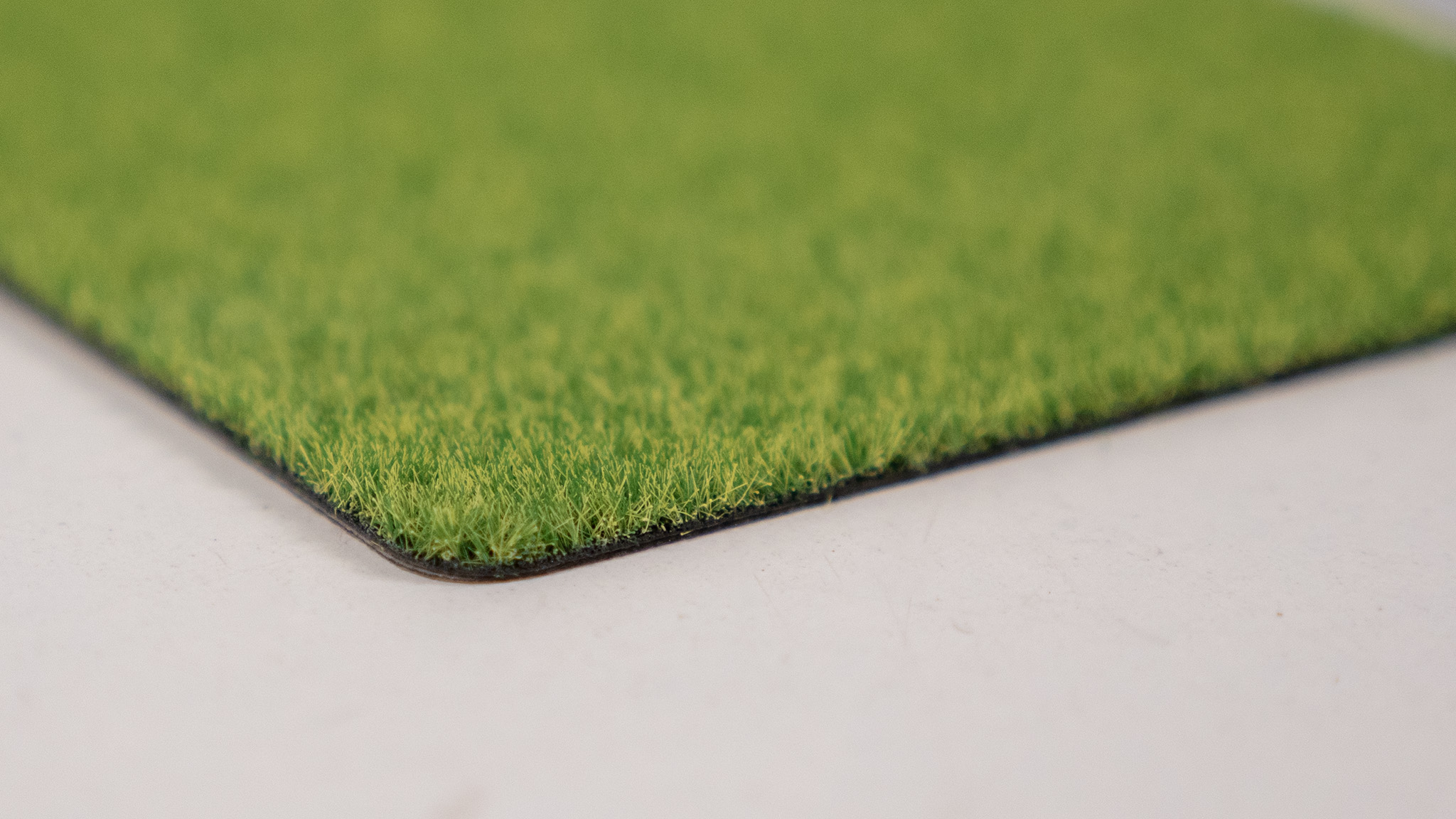
A mixture of green and yellow colors scattered throughout gives it a strangely natural look on the back of a wholly synthetic device, and it adds some serious grip to an otherwise slippery glass and metal sandwich of a phone.
The coarse grass texture reminds me quite a bit of one of those little brushes you use to clean the underside of your fingernails. It's not unpleasantly coarse but it does have a texture that could be irritating to sensitive skin. This isn't soft, natural spring grass. Thankfully, DBrand has ensured that it's a dry-feeling texture, not the slimy plastic you might be familiar with when you hear "turf grass."
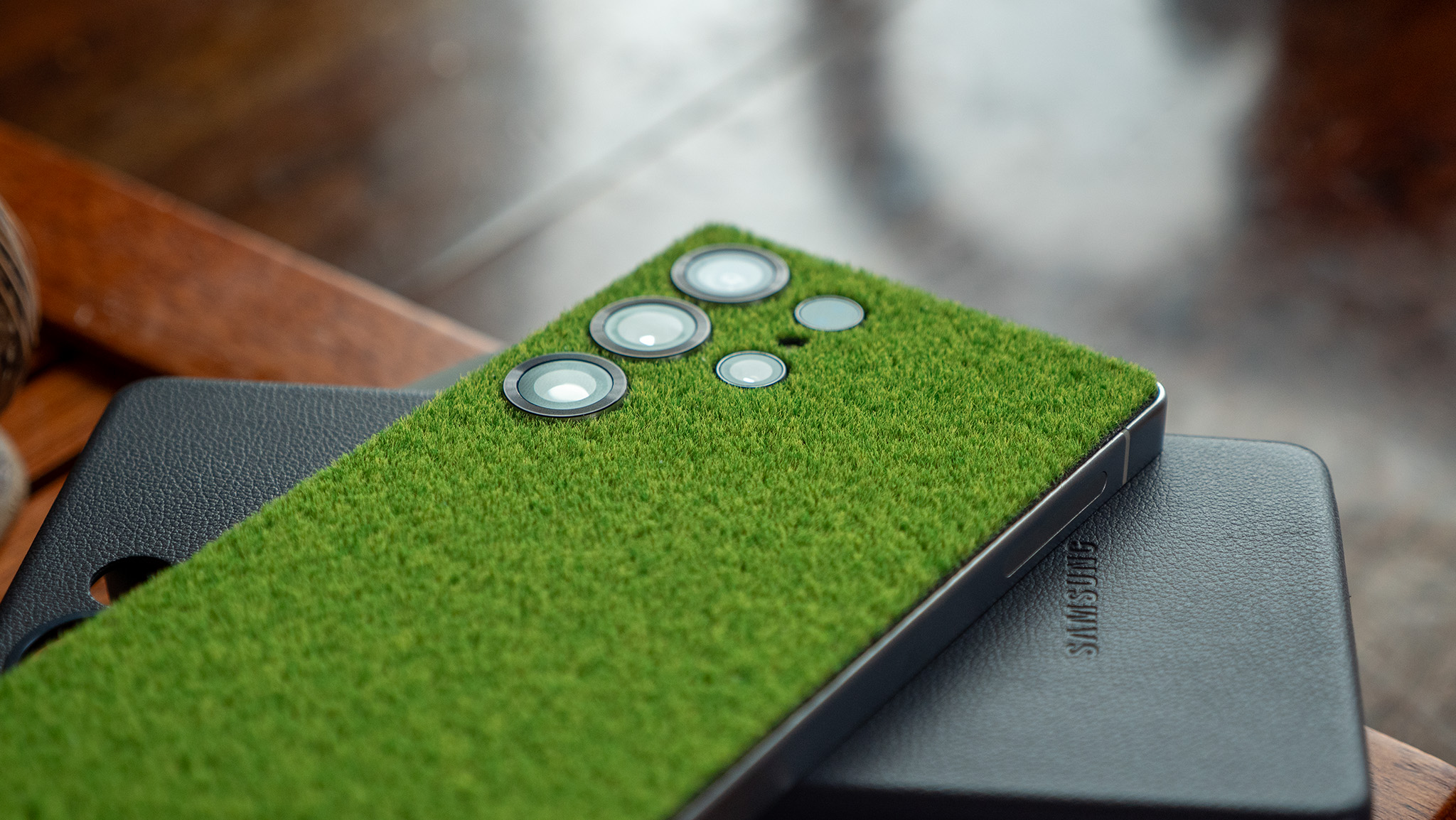
As it has a significantly grippier texture than matte glass, this one will hold fast in your pocket even if you decide to do a handstand. How do I know that? I did it, of course. It'll also probably make your pocket go inside out every time you pull it out, especially if you wear shorts or pants with mesh pockets.
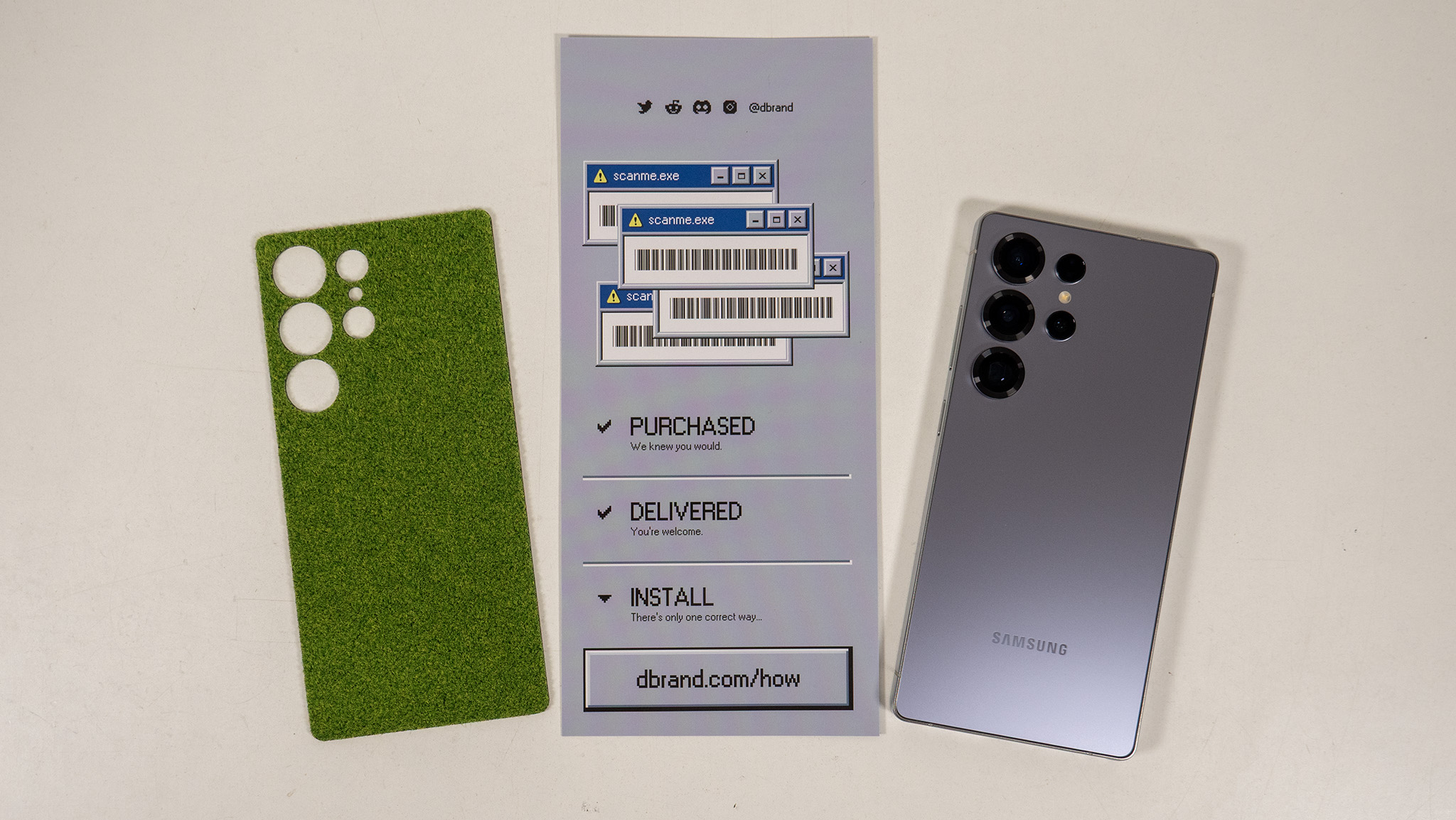
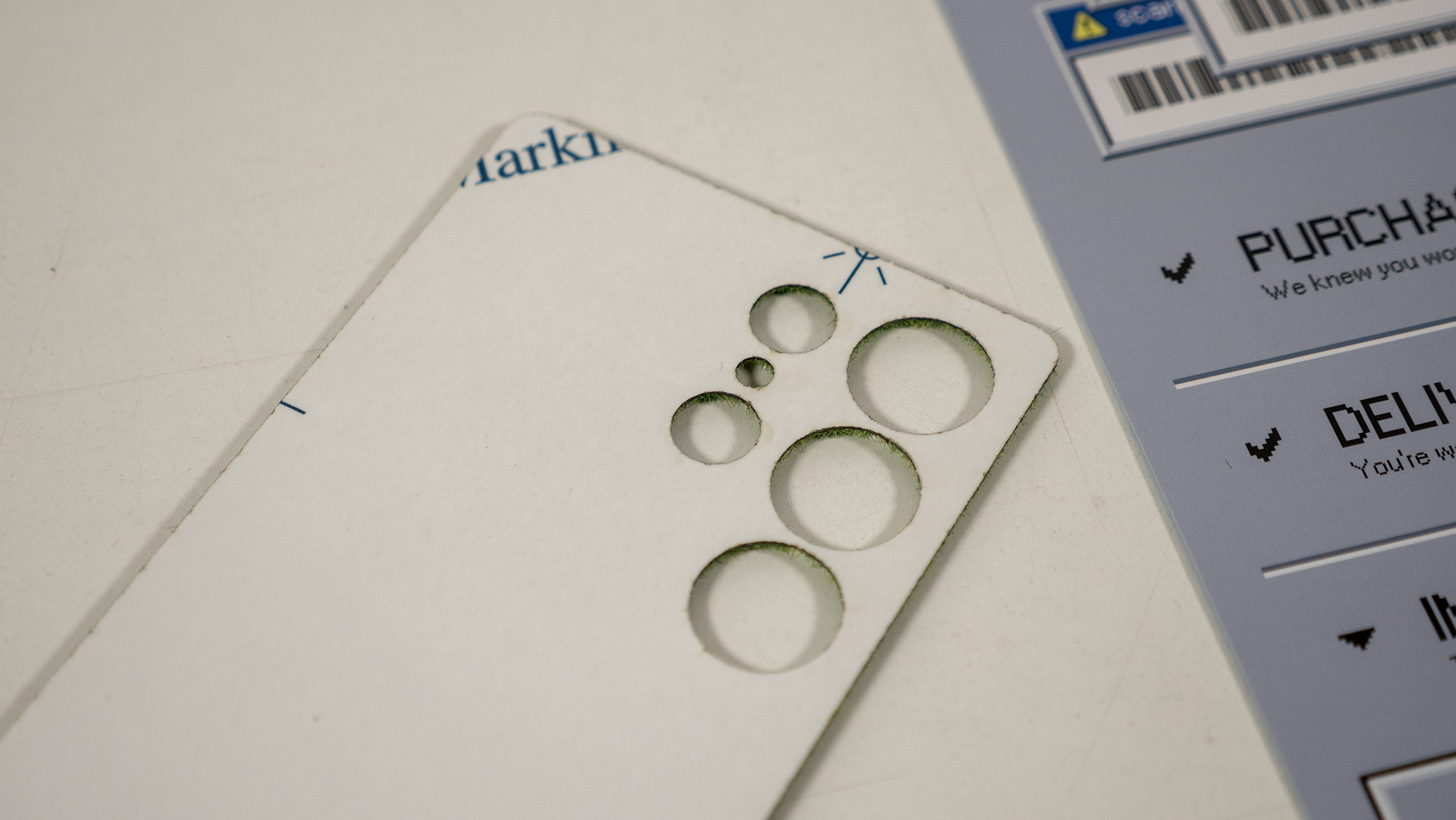
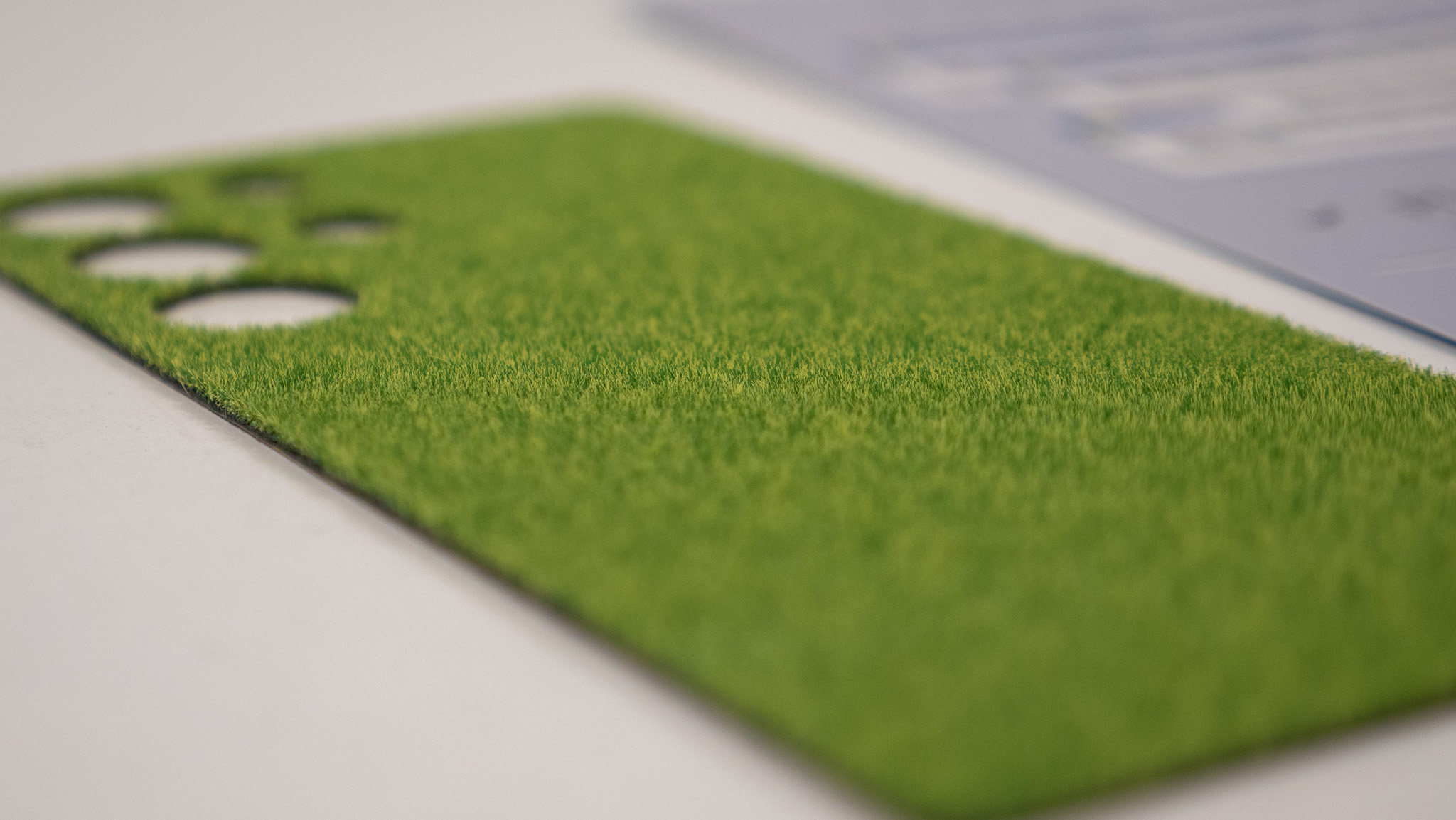
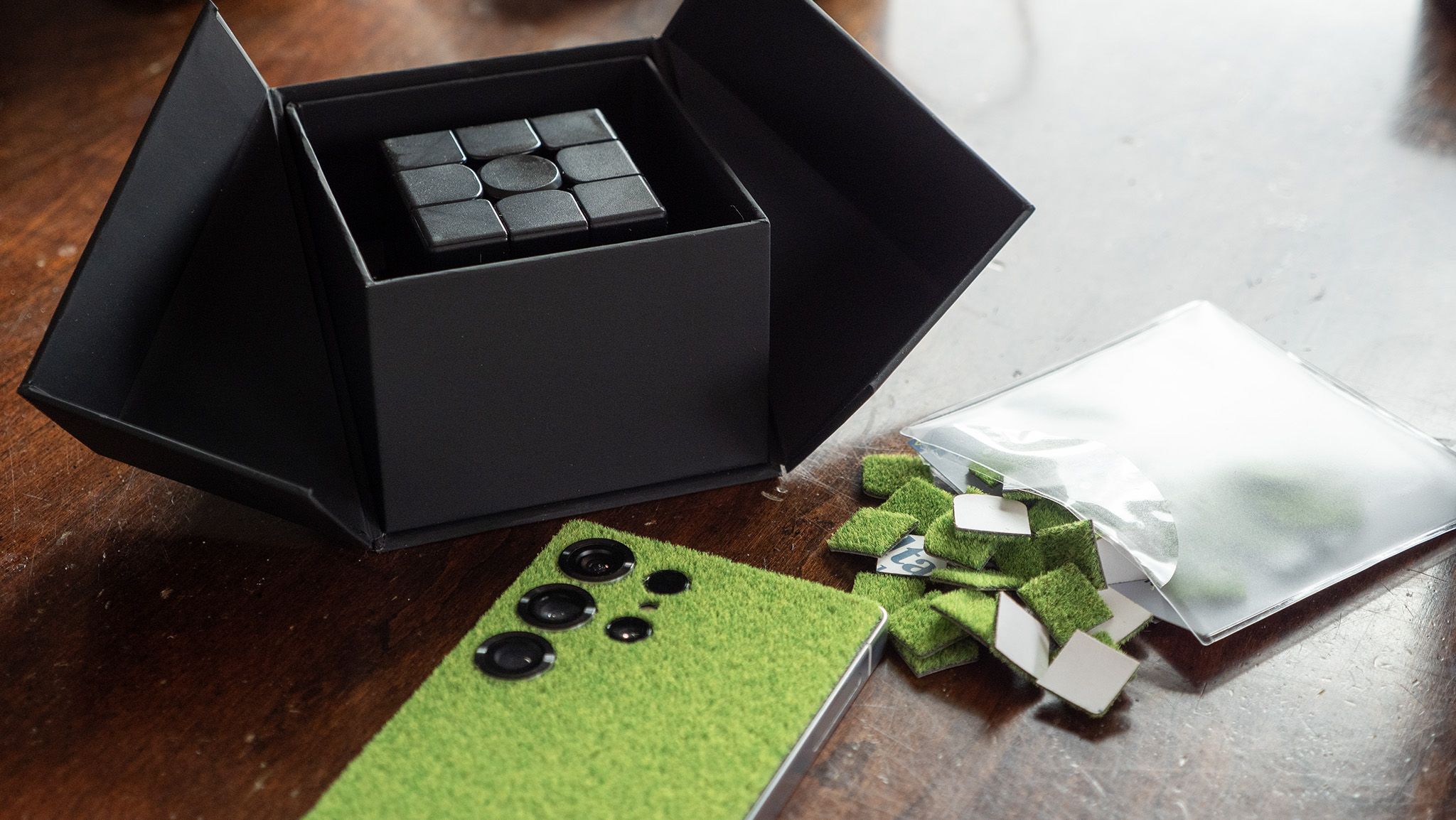
So this skin can finally make phones like the Google Pixel 9 Pro not slippery, but what else can it do? Eliminate wobble on phones like the Samsung Galaxy S25 Ultra. One of the worst smartphone trends in recent years is the obnoxiously large camera lenses that are placed off-center on the back of phones. That makes them wobble when you put them down on a table.
But this skin completely fixes that, and it even makes it so the phone doesn't slide off a slightly slanted surface. As you might expect, adding the Touch Grass skin will make it impossible to use a case with your phone. If this is a concern, DBrand has its own line of cases that are built to be used with its skins, as you'll put the skin on the case instead of your phone.
Goodbye, glass
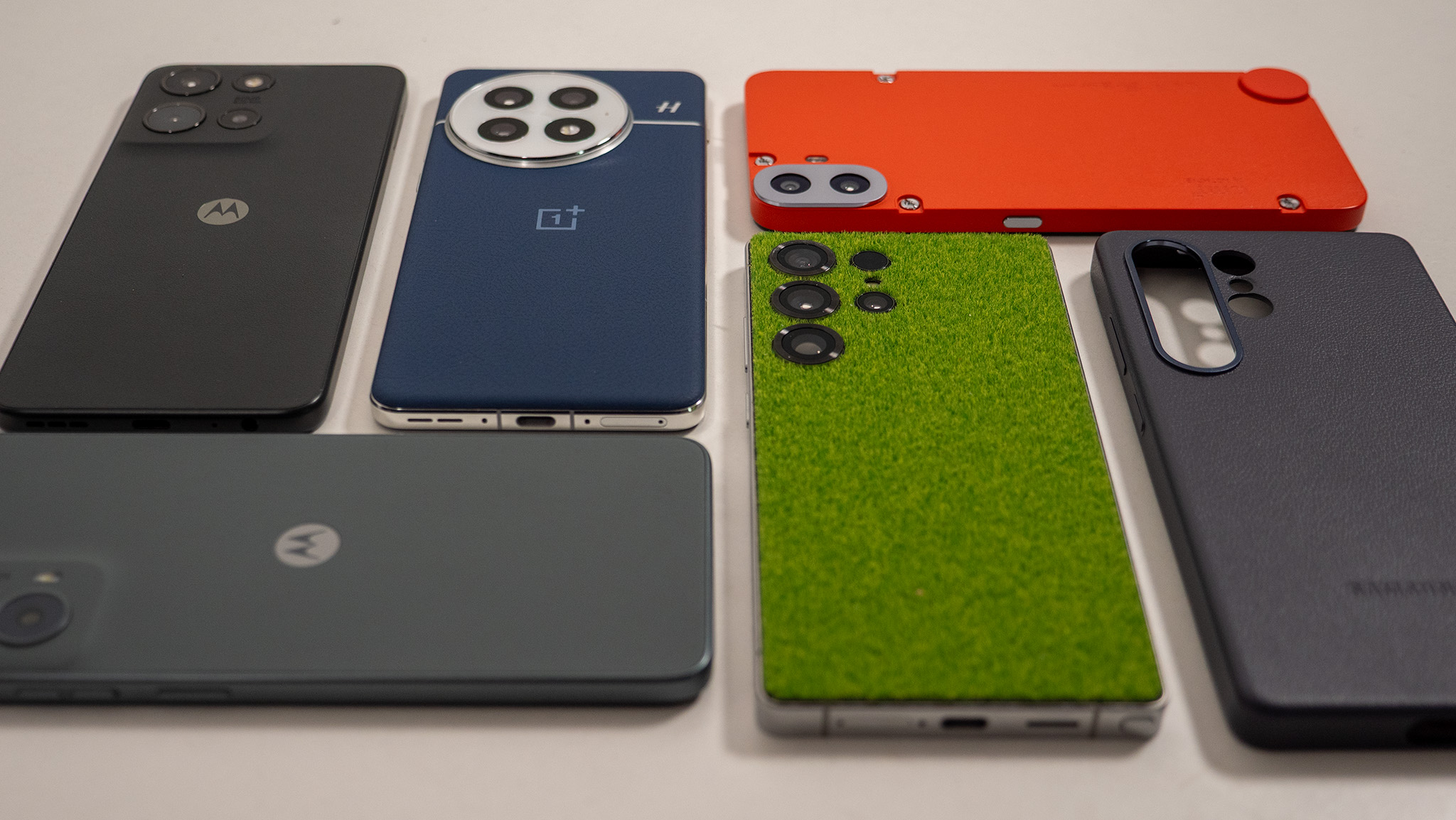
I hate glass phones. I'm not sure what genius thought covering a smartphone in breakable glass was a good idea, but here we are. Sure, it made things like waterproofing and wireless charging easier for a time, but those days are behind us, and I hope to see more phones like the OnePlus 13 that recognize this.
Motorola's entire lineup, from the $200 Moto G 2025 to the $999 Motorola Razr Plus 2024, is clad in different grades of "vegan leather." Vegan leather can be made of anything from pieces of plastic to cactus leaves, each base material giving the final product a different texture. Phones like the Spring Green Razr 2024 or the Midnight Ocean OnePlus 13 use a very soft, cloth-like texture that feels less like leather and more like a suede shoe.
I definitely prefer that sort of smooth texture as it not only provides much-needed grip to modern phone designs but also removes a breakable surface. These phones don't use some kind of skin adhered to a layer of glass. Instead, this texture is factory-applied to a non-glass backplate and tucked behind the side frame, ensuring it will never peel off. These have also proven to be just as durable, if not more durable, than glass over time, earning phones like the OnePlus 13 a rare IP69 water and dust ingress rating.
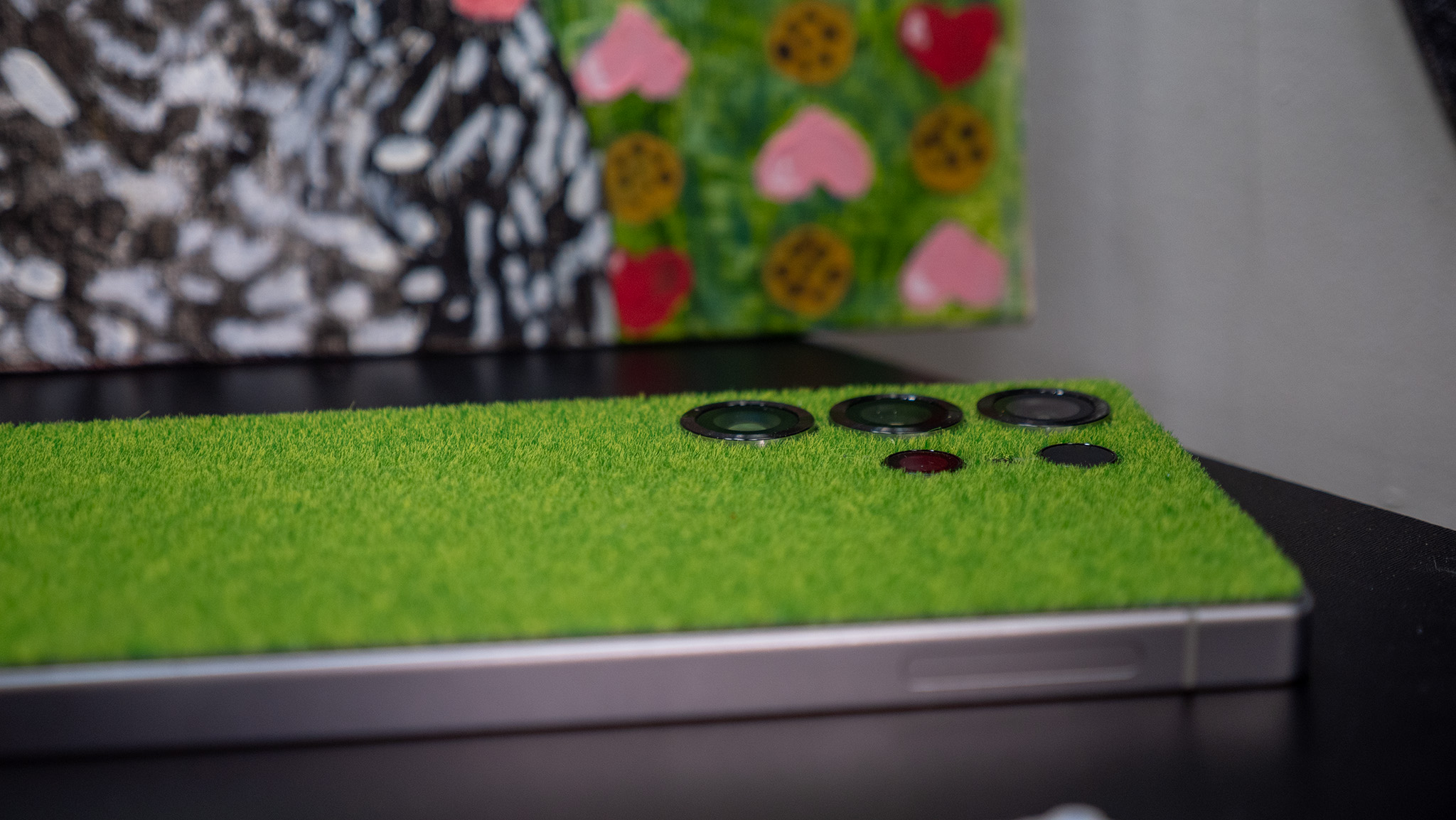
Manufacturers are finally ditching glass and using interesting textures like vegan leather that have proven more durable over time.
As for DBrand's limited edition Touch Grass skin, Ijaz ensured me that it was made for daily wear and tear.
"The biggest one was definitely around durability - especially at the edges. Early in development, we found that our traditional die-cutting method produced clean lines but led to grass strands gradually shedding from the edges (think: receding hairline).
To solve this, we switched to laser cutting. The laser's heat effectively melts (cauterizes) and seals the polyethylene strands at the perimeter, bonding them together to prevent shedding over time. Additionally, embedding each strand securely into an adhesive base layer (covering about 25% of its height) was critical in ensuring long-term stability. Balancing the novelty factor with real-world usability was an interesting challenge, but we're pleased with how well it turned out."
Of course, like with some other things, some of the biggest brand names simply aren't doing anything interesting in this area. The bright side is that if you've got an iPhone, Samsung Galaxy, or Google Pixel phone, you can order a DBrand skin to mostly fix this problem. It might still be glass underneath, but at least the outside won't feel like a slippery, breakable surface anymore when you slap a skin on it.

You must confirm your public display name before commenting
Please logout and then login again, you will then be prompted to enter your display name.

